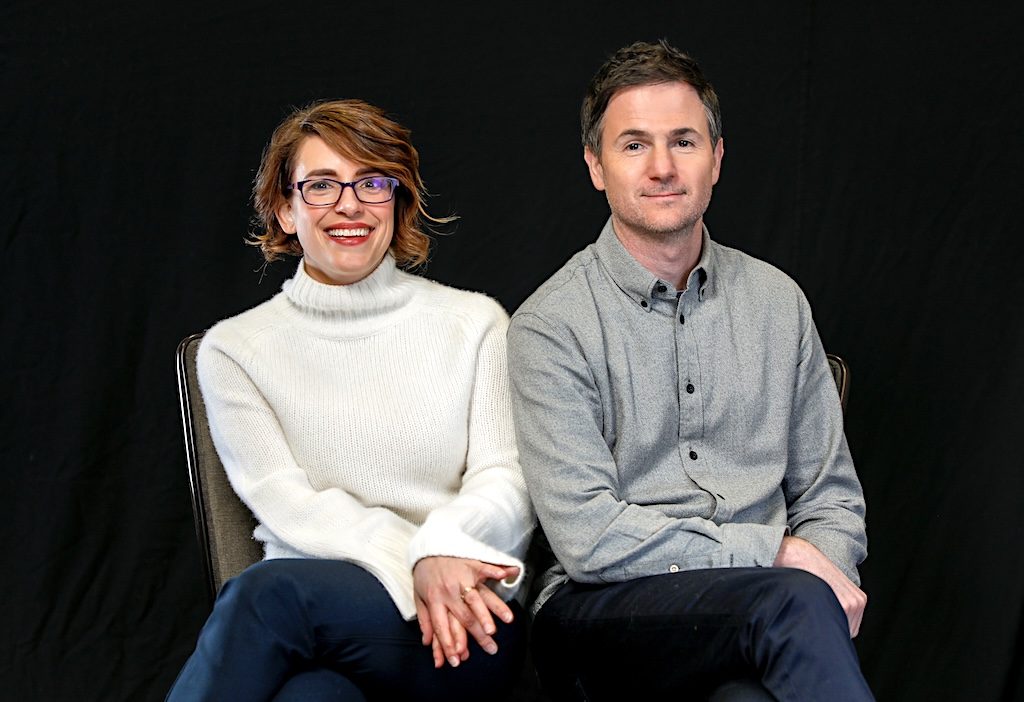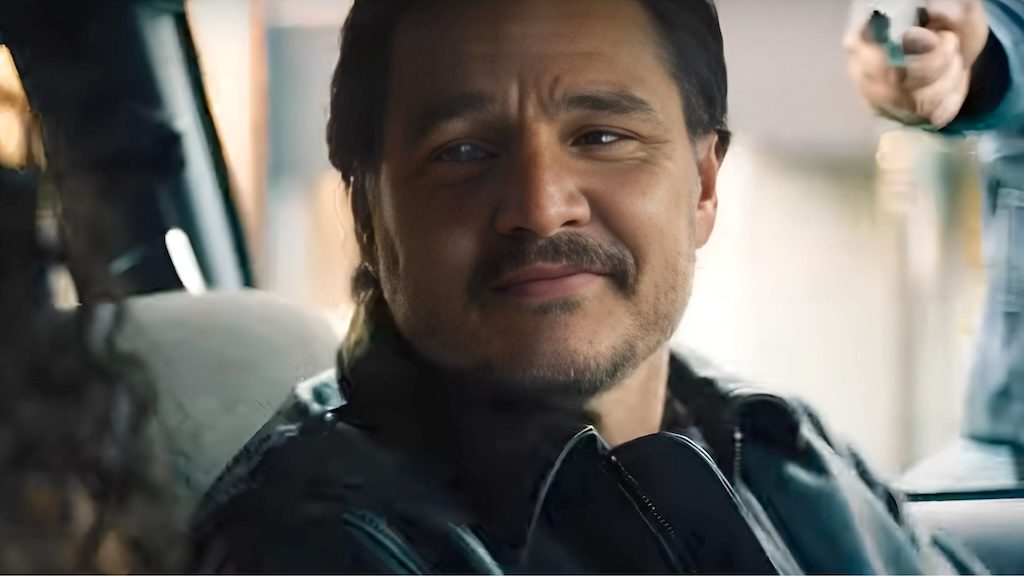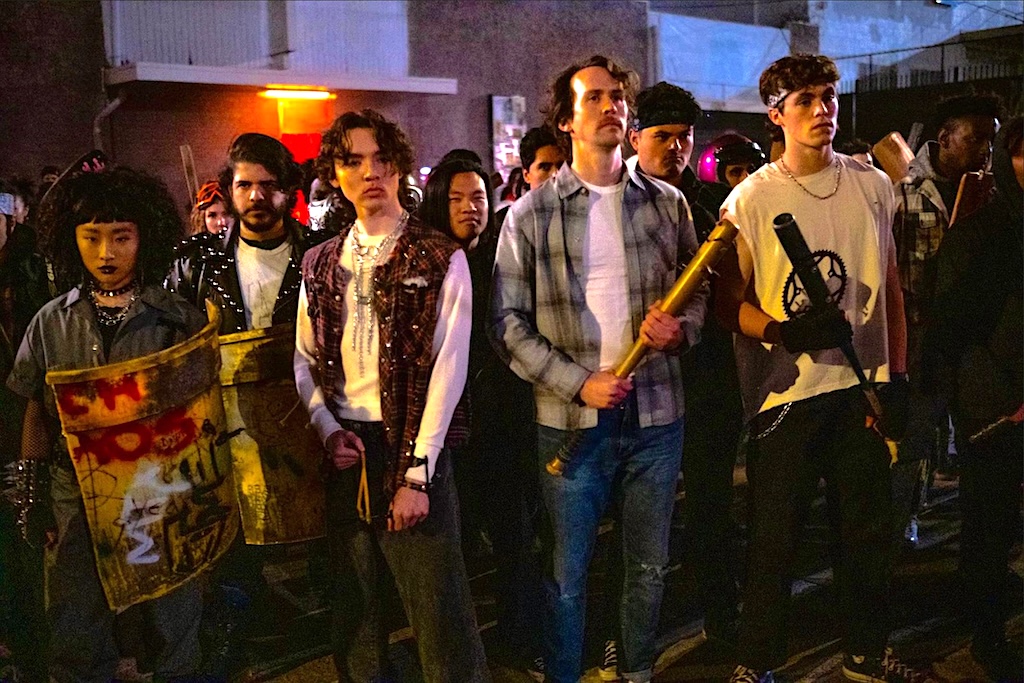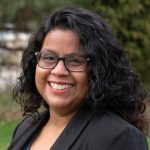They have worked together for over two decades, and on projects as diverse as Half Nelson and Captain Marvel on the big screen to Mrs. America and Masters of the Air on the small. Anna Boden and Ryan Fleck have written, directed, and edited in, as they say, a number of different sandboxes.
In perhaps their most creative production to date, Boden and Fleck blend action, comedy and even the supernatural in what is essentially a love letter to the city of Oakland, California, circa 1980s. Freaky Tales is an anthology-style film made up of four individual, but connected, stories, and features punk rock kids, neo-Nazis, rap artists, a basketball player-turned-superhero, and hitmen in a chaotic adrenaline rush of pop culture and gore. You might not be entirely sure what it’s about just based on the trailer, but you know you’d like to find out.
The title references rapper Too Short’s track of the same name, and the film stars Pedro Pascal, Ben Mendelsohn and Jay Ellis, featuring a number of cameos. I spoke with Boden and Fleck about their career and the real-life events that underlie the elaborate stories depicted in the film.
How did you first meet and what sparked your creative partnership?
Ryan: It was around 1999 – 2000. Anna went to Columbia University, and she took a summer class at NYU where I was working. We were working on short films and that’s how we met.

Anna Boden and Ryan Fleck. Photo by Kyle Grillot/ REUTERS
We just started working together. She went back to Columbia and did some film classes, and I helped her out with those. I started writing some projects and soon I was sharing pages with her and we were writing together. It just took off from there.
Tell me about Oakland and what it was like in the 1980s. What was it about the city that got under your skin and made you want to write this film?
Ryan: I grew up there and I think part of it is just the memories of being a 10-year-old; no matter where you grow up, there are going to be vivid memories. Things that are inspiring that you remember… and some things that you’re probably misremembering, but that you’re elaborating and exaggerating on. And so, everything in this movie comes from a seed of truth, but then expands to outrageous places where the truth leaves off. We go to some wild places.
[More: Dahvi Waller Talks ‘Mrs. America’]
But I think the thing about Oakland is I just loved it when I was growing up. I loved discovering new music from local artists like Too Short. There was a punk rock scene there at the time and also this sports world. These were all the things that I was obsessed with as a kid, and they just stayed with me over the years and eventually led to the movie Freaky Tales.
What were the actual historical events behind the stories you tell in the film? How did you draw from those to create a new story?
Ryan: They were the foundation. We’re a writing team, and over the years, I would pitch Anna on different versions of what Freaky Tales could be. We always knew it would be something involving Too Short and the music, and that there would be something involving the (Eric Augustus) “Sleepy” Floyd basketball game where he’s called Superman by the announcer. There were versions of it that were never really great. But then we came up with the idea to break them into chapters and give each moment its full attention. I think that’s when we really cracked it.
Anna: The first chapter is Gilman Strikes Back and that is in reference to a real place called Gilman. It’s in Berkeley, and is a completely volunteer-run, nonprofit punk club that’s still an alt music club. It was formed in the 80s and is a true story of a group of non-violent punk kids whose club was being overrun by these neo-Nazi boneheads who kept coming in and beating everybody up. They literally took a vote and decided to fight back. So we took that true story and elaborated on it and made it a little bit more fantastical. We made it more cinematic and invented our own characters around it, creating our own love story. And we made the fight scenes more “out of this world.”
The second story is based on a real song called Don’t Fight the Feelin’ (Too Short) and the truth behind that story is just the song itself. We invented our own fictionalized origin story of how that song might have come to be. And we created two fictional characters called Barbie and Entice – even though there were two real women by those names (Danger Zone) who were also on that song – and imagined what their lives might have been like, and the story behind that song.

Clint (Pedro Pascal)
Ryan: The third chapter is with Pedro Pascal, and that’s the one that’s pure fiction; it’s not really based on anything. But it is the one that has the most movie references for the kinds of movies we grew up loving. So that’s what that is and why it’s partly set in a video store.
The final chapter is the Sleepy Floyd chapter, which is based on a real basketball game where the underdog (Golden State) Warriors were playing the (LA) Lakers. The Warriors got destroyed by the Lakers except for one game where the real-life Sleepy Floyd basketball player goes off in the fourth quarter and basically wins the game with the team on his back.
What happens after that game is the legend of what we created for the film. We heard this amazing, infectious play by play by (sports commentator) Greg Papa, where he actually calls him Superman. We had this thought of ,“Well, what if he actually was a superhero”, so we created the superhero story around the character of Sleepy Floyd. It’s obviously all invented.
Tell me about weaving a supernatural element into each story.
Ryan: We come from the VHS generation and the way that I watched movies was to tape them off the television. I would set the timer on the VCR, wake up the next day, and then watch the movie, after school or whenever. Oftentimes I would fast forward through the commercials. But I remember so many of those Bay Area commercials. I think every city had them with some kind of spiritual learning or higher consciousness element that was being sold.
Some of them were scams and some of them were ridiculous but some of them were really earnest and kind of charming. I think that’s what inspired the idea. We thought, “What if this was real and what if you really could tap into some kind of higher power in order to overcome obstacles in your life?”
What did it mean to have both Too Short and Sleepy Floyd perform cameos in the film?
Ryan: It was great, because so much is based on what they did in life and what they created. So it was just really fun to have them make appearances in the movie. We also had cameos from football legend Marshawn Lynch, who was from Oakland, and Tom Hanks as well.
What genre is Freaky Tales?
Anna: We call it a genre mix tape. It is a cinematic mix tape and that’s why we use so many different formats, and different kinds of chapters. But we think of it as being one complete thing, so that when you pop in that mix tape, it’s hopefully perfect and satisfying. You listen to it and it’s a great album all the way through. It just happens to be your favorite songs from all these different kinds of genres.
We do borrow from a lot of different ones, from sci-fi and comedy to action and thriller… even musical and love story. That’s part of what makes it unique and fun, I think.
You have previously worked in a number of different genres. Do you have one that you’re most comfortable writing in or one that you enjoy the most?
Ryan: I don’t know the answer, but we love movies. We’ve always loved movies, and we’ve loved all kinds of them. We’ve made six movies now, and a bunch of television shows. I think we’ve been fortunate enough to be playing in different sandboxes for all of them, which has been really fun for us as fans of movies. To be able to tell different stories that are set in different genres, different tones. Hopefully we keep that pattern going as we move forward.
How do you write together and what is your process like?
Anna: I do the left hand.
Ryan: I do the right. And she handles the verbs now.
Anna: At the beginning, we start the process of outlining and brainstorming in a room together. Then when we go to actually put pen to paper, we generally do that separately, in different rooms, and pass drafts of the script back and forth. When we’re in the revision stage, we get back together again and start digging in.
As you said, you’ve had a varied career path, working in all different genres as well as in both film and television. You have also both written and directed in those mediums. What are some of the key lessons that you’ve learned along the way?
Ryan: There are little things that we’ve learned here and there, and some questions that, when we’re writing, we now ask ourselves more than we used to. “Is this scene going to be on the cutting room floor?” It happens on every movie, but I think we’re better at spotting that scene sooner and not wasting time and energy on shooting it and having it cut later.
Anna: I think the other part of that is, “Am I really excited to shoot this scene or is this scene just getting across a piece of information? And if it’s just getting across a piece of information, can I put that piece of information in a scene that I’m really excited to shoot?”
[More: John Orloff & Gary Goetzman Discuss Their World War II TV Series ‘Masters of the Air’]

